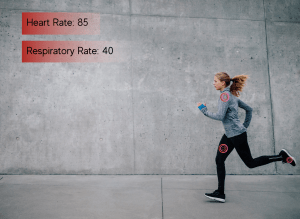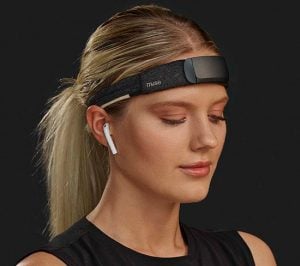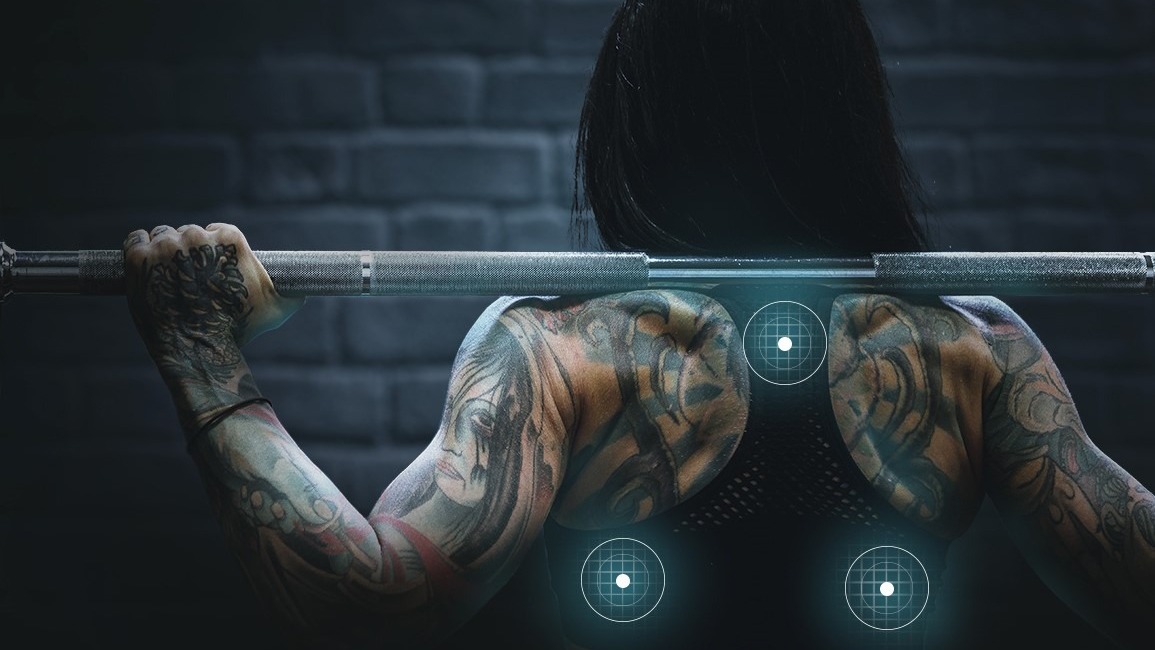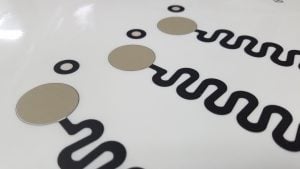Wearable Technology are smart electronic devices that can be worn on the body. Fitness enthusiasts all over the world are always looking for ways to increase their health and boost their performance. Wearable technology can be used to track progress. These devices can help you gain a better understanding of your daily activities. Wearables can help track a variety of things such as heart rate, activity level, measuring the number of steps covered, respiratory rate, muscle level, and fatigue. This data is then linked to another device that allows you to view the results.
Wearable technology can have several benefits, but have you considered the use of biosensors? Biosensors are printed electronics that are worn directly on the skin and can read vital information such as heart rate, respiratory rate, brain activity, and muscle function. They can provide the same vital information gained from a fitness tracker, and even more. Continue reading for examples of benefits provided by wearable technology and biosensors.
The main features of wearable technology include:
1. A Step Counter
Wearable technology counts the steps you take when you participate in daily walking routines. They use accelerometers and altimeters to measure the distance you have covered. This can be considered as essential, especially for athletes or hiking enthusiasts. By being able to monitor your steps taken, you’ll also be able to monitor progress made.

2. Heart/Respiratory Rate Monitor
Wearable technology is equipped with heart monitors that are used in the measuring of heart rates. Biosensors can be directly applied to the skin in order to provide you an immediate heart rate. In fact, biosensors have been known to provide early detection of any heart rate abnormalities and have even been known to detect oncoming heart attacks.
Wearable technology can also monitor your respiratory rate. This makes it possible to notice any abnormalities in your breath rate, and whether a break is needed during your workout.
3. Calorie Counter
This feature tells you the number of calories you have burned while walking. You can also track the number of calories you have consumed in a day. By being able to monitor your caloric intake, you’ll be able to pick up on any dietary concerns you may have, or to track what days were your healthiest that week.
4. Goal-Setter
Wearable technology can help you set your personal fitness goals, they will notify you when you achieve these goals, and when the goals have not yet been achieved. By setting goals within your fitness tracker, it helps provide that extra initiative to reach them.
5. Connectivity
This is a feature that allows the devices to connect to your smartphone and assist in tracking your long-term progress. Biosensors, although directly applied to the skin, provide you the connectivity ability as well. They can utilize Bluetooth, which once enabled, can sync directly to an app on your cell phone, meaning that you’ll have all of your data given to you in real-time. The best part is, all of the information will be stored within the app and easily accessible to you whenever it’s needed.
6. Muscle Fatigue/Symmetry
Although this can’t be monitored with an every day “fitness tracker”, muscle fatigue and muscle symmetry can be monitored through the use of biosensors.
By using biosensors, you’ll be able to monitor muscle fatigue, meaning you can easily recognize when you’re overusing your muscles. This will prevent muscle burnout or muscle strain and provides you the ability to give your muscles the well-needed break they deserve. However, biosensors can also monitor muscle symmetry, which means whether your muscles are performing the same. This helps to make it easy to recognize injuries before they occur, such as if the left calf muscle is only performing at 50% of what the right calf muscle currently is.
Advantages of using wearable technology in fitness
1. Accountability
Wearable technology will keep you accountable by reminding you every day to get into your physical activity session. It will constantly remind you of your workout schedule. This builds a sense of accountability in yourself because you will feel more determined to workout when you have a reminder to do so.
2. It assists you to set goals
Wearable technology allows you to track your progress while you are on your way to attaining your goals. Whether you are trying to lose weight or win a marathon, wearable technology will help you set your goals and they will be with you every step of the way. Seeing your progress every day will give you the zeal of getting to where you desire by attaining your set goals.
3. Motivation
These devices will give you motivation by providing you with visual progress. It will show you how long you have been active. It tracks the number of calories you have burned and the number of steps you have taken. The best part of using wearable technology in fitness is the fact that all of the information is easily accessible and stored for you. This means that you can look at your performance from months prior and compare it to where you’re currently at on your fitness journey!
4. Monitors Heart Rate
They allow you to measure your heart rate and pulse. This is essential during a workout as it allows you to measure the intensity of your workout. It’s also essential because it can help to monitor any abnormalities along your fitness journey and can help to prevent any future injuries/health concerns.

5. Enables you to stay connected
Wearable technology can supply you with notifications as they can be connected to your mobile device. Data and progress from your workout can appear on your phone whereby you can read and interpret them. Now that wearable technology can easily be synced to your smartphone, it provides a sense of connectedness. You are even able to share your workout notifications with others, which helps to build accountability and show others you’re pursuing your fitness journey.
6. Engagement
This is a great advantage offered by wearable technology. You will be highly engaged in your health and in physical activity as you will be tracking your personal health trends. Choosing to have a fitness tracker on your body will be a reminder to always keep fit and bring balance to your life.
 7. Reduce injury and minimize overtraining
7. Reduce injury and minimize overtraining
The goal of a workout is to apply a stimulus to your body to help it adapt and become stronger. Wearable technology will provide you with data that indicate stress loads. With this data, you will be able to make informed decisions to help you train harder and recover better. Since stress loads and fatigue are being monitored, prevention of injury will be easier. This is essential by monitoring muscle fatigue and muscle symmetry. This prevents oncoming injuries.
8. Raising the Bar
Fitness involves putting your body into a constant state of challenges so that it can adapt. Increasing challenges is the only way you can go forward. All this lies in the capability of your tracking device. They measure physical activity and they gauge your strengths and weaknesses. From this data, you will learn how best to increase your workout challenges.
Incorporating wearable technology in your lifestyle
Having this wearable technology in your life will bring about a better balance between work, leisure, and lifestyle. You can adjust your routine and find what best fits you. They will help you set daily, weekly, and even monthly goals for fitness. They can sync with your smartphone to help remind you to get up and go do your fitness routine.
Types of wearable technology
1. Smartwatches
Smartwatches are worn on wrists just like any normal watches. Instead of mechanical cogs, they have a processor and touchscreen. Fitness smartwatches have features such as heart rate monitoring, sleep tracking in order to measure rest times accordingly. They also assist in measuring energy levels so you can schedule your workouts.
2. Fitness Tracker
 Fitness Trackers are worn on other areas of the body other than the wrist. It is capable of measuring heart rate, respiratory rate, brain activity, and muscle activity. They add functionality other than what smartwatches are capable of. One example is the Polar heart rate chest monitor that allows use while swimming. Another is the Muse headband, a fitness tool that measures brain signals much like a heart rate monitor senses your heartbeat. The Biostrap armband allows you to wear on various areas of the body, other than the wrist. It help with not only activity tracking but sleep monitoring as well. These technologies can benefit you in different ways while on your health journey.
Fitness Trackers are worn on other areas of the body other than the wrist. It is capable of measuring heart rate, respiratory rate, brain activity, and muscle activity. They add functionality other than what smartwatches are capable of. One example is the Polar heart rate chest monitor that allows use while swimming. Another is the Muse headband, a fitness tool that measures brain signals much like a heart rate monitor senses your heartbeat. The Biostrap armband allows you to wear on various areas of the body, other than the wrist. It help with not only activity tracking but sleep monitoring as well. These technologies can benefit you in different ways while on your health journey.
3. Smart Clothing
They are also known as e-textiles. They offer different ways of tracking body movements. Sensors in these fabrics play a big role in fitness. They can be used instead of watches. Some examples are like, yoga pants that vibrate to encourage movement and tops that monitor heart rate and intensity. They do this in real-time and send this data straight to your smartphone. Smart garments are the future of health monitoring today. Because they’re able to have biosensors implemented into them, the opportunities for advancement are infinite. An example of a product using this technology is Strive. Their garment monitors and measures muscle activity and motion in one easy to use fitness system.
No matter what options you feel may be best for you, there is no doubt that wearable technology can add a tremendous amount of value to your fitness goals.
If you’re interested in getting your next project started into wearable technology, reach out. We’ll be happy to help!
 Meet the Author: Jaclyn King
Meet the Author: Jaclyn King
Jaclyn is a Digital Marketing Specialist on the BTI Team. Her main job responsibilities involve inbound marketing, content creation, and social media management. To get to know more about Jaclyn, check her out on LinkedIn!


